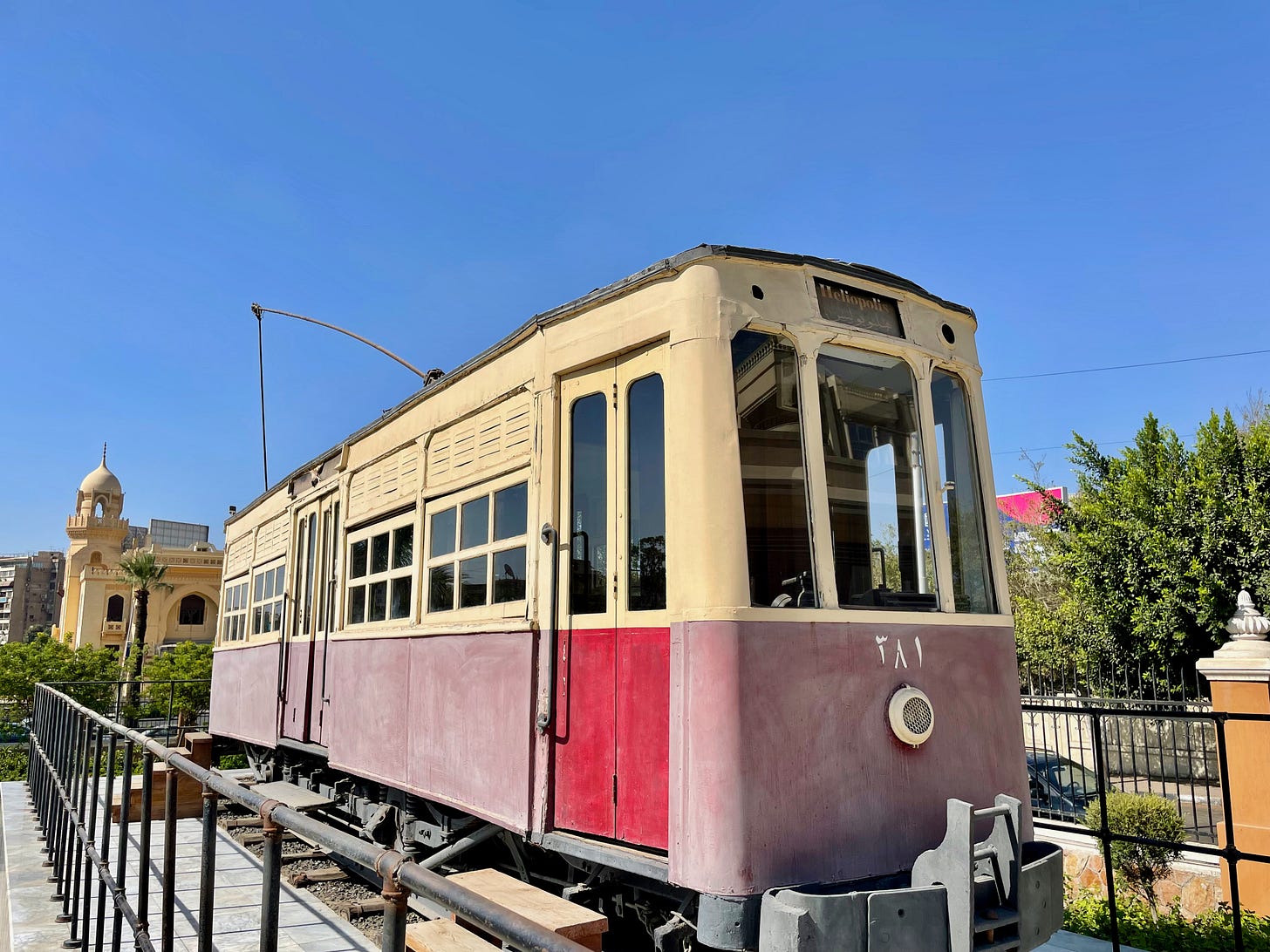A Visual Treat: The Baron Empain Palace
Cairo's most eclectic architecture + 100 subscribers, yay!
Hello, friend! It’s an exciting week, because I just hit one hundred subscribers! I am so grateful to you for being one of them, and I hope you are loving what you’re reading so far. If we haven’t met yet, I would really like to get to know you—introduce yourself in the comments and tell me what you want to know about life in Egypt.
As a thank you for being an OG, this week I’m bringing you some gorgeous photos (if I do say so myself!!) of the Baron Empain Palace—also known as Le Palais Hindou, or the Hindu Palace—one of Cairo’s more interesting architectural specimens.
The palace is a whimsical mishmash of beaux arts, Indian, Khmer, and traditional Egyptian design styles. When you add in the lush green lawn and a blue sky, it looks like it could have been illustrated by Studio Ghibli (and if you haven’t seen any Studio Ghibli films, you really, really must. Spirited Away is the perfect gateway drug).
If you look closely at this photo, you can spot all four design aesthetics: the conical tower reminiscent of Cambodia’s Angkor Wat; the columns and classical statues; the Buddha in meditation over the door; and the geometric patterns in the window on the right and the fencing on the roof, which are distinctly Egyptian.
The palace was erected between 1907 and 1911 by Belgian-born Edouard Empain, a construction magnate whose company built the Paris metro. Empain, along with Egyptian-Armenian businessman Boghos Nubar Pasha, also built much of Heliopolis, the neighborhood surrounding the palace—including housing for a variety of social classes and a streetcar that ran until 2016. To this day, Heliopolis is one of Cairo’s swankiest neighborhoods.
The Empain family sold the house in the 1950s, and it was neglected for half a century. In that time, the palace was looted, graffitied, and covered in thick, beige dust. Rumors swirled that it was haunted, partially because Empain’s wife Helena is said to have fallen to her death from the spiral staircase. According to legend, secret tunnels linked the house to the crypt where Empain was buried and the main tower could rotate 360 degrees (the latter is, of course, physically impossible).
The Egyptian government opened the palace as a museum in 2020, after restoring and repainting it in its original copper color. While the Baron Empain Palace isn’t one of the city’s top attractions, if you find yourself in Cairo with some time to kill, it’s well worth the visit. I’ve never seen anything quite like this place. I left feeling refreshed and inspired.
That’s all for now! Have a great week, and see you next Tuesday.
P.S.—If you are looking for a book to read, I just finished Cairo Circles and can’t recommend it enough. It’s that rare novel that manages to feel effortless and highly literary. The story follows six young Cairenes of different economic strata, showing how their lives intertwine and how each navigates class constraints. I encourage you to pick it up! If you do, please tell me what you think.














I take millions of pictures of buildings but I never know stuff like "the architecture is three different types of historic designs." That type of information always increases awe.
Yay to 100 subscribers! 🎉